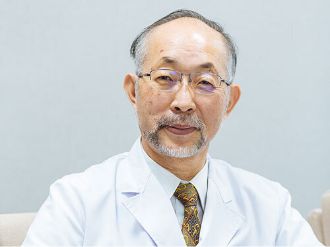Why we adopted coaching at our hospital(1)
Organizational Management in an Era of Increasingly Complex and Sophisticated Medical Care
President, Shin-Oyama City Hospital
Dr. Kazuyuki Shimada
Shin-Oyama City Hospital is the only general hospital in the suburbs of Oyama City, which has a population of approximately 170,000. The hospital has 300 beds and 620 employees, and consists of a high care unit, a 7:1 general acute care ward, and a community comprehensive care ward. 5 years ago, the hospital changed its management structure from a municipal hospital to a local independent administrative institution, aiming to break away from its deficit structure, and restarted its operations. 2 years ago, a new hospital was built and relocated.
As a result, the current account balance for the four years of the first medium-term plan (2013-2016) of the local incorporated administrative agency posted a surplus despite an increase in expenses after the new building and relocation in the final year of the plan. The main reason for this was, first, that the employees worked hard to change their mindset that they could no longer rely on the city and had to earn their own money. The hospital was also able to operate more freely, increase the number of staff, including physicians, and rapidly establish various facility standards (7:1 basic hospitalization charge, DPC hospital, regional medical support hospital, hospital functionality evaluation, introduction of electronic medical records, etc.), which were not available before, as "standard equipment" for a regional core acute care general hospital. The rapid development of these standards (7:1 basic hospitalization charge, DPC hospital, community health support hospital, hospital functionality evaluation, introduction of electronic medical records, etc.) was also a major factor.
As hospital functions become more sophisticated, new "organizational issues" emerge that must be overcome at that level. Communication among staff members is not possible, and each individual is disjointed. There are "barriers" between departments and positions, which prevent mutual collaboration. The boss-subordinate relationship inhibits free communication. These are the pitfalls that hospitals tend to fall into. Hospitals are a group of "craftsmen" with national licenses. Although these "craftsmen" have the "professionalism" to fulfill their responsibilities, they are rarely trained as organizational personnel. As medical care becomes more complex and sophisticated, the role of "organizational management" will become increasingly important. They must develop not only knowledge and technical skills, but also communication, analytical, and problem-solving abilities. Without the resolution of these issues, it seemed difficult to reach the next level of hospitals. The hospital must change its "organizational culture" in order to be able to survive the changing circumstances surrounding medical care in any era.
This is where I encountered "systemic coaching" provided by Coach-A Co. Systemic coaching is a method of supporting the achievement of goals set by the coachee and the recipient (called the stakeholder (SH)) through regular dialogue to encourage the SH's own self-improvement and growth as an organization member, while helping them achieve the goals they have set for themselves. The process involves building a relationship of trust with the other party, listening carefully without interrupting, and then talking to the other party and asking questions to help them organize their thoughts and become aware of new perspectives. If such two-way dialogue takes root among the staff, it is expected to foster an "organizational culture" of "accountability," in which people take responsibility for thinking and taking action to improve the organization and hospital. At the hospital, the director, deputy director, director of nursing, administrative director, and head of the pharmacy department participated in the class to learn coaching theories and techniques. In order to put this into practice (fieldwork), systemic coaching was practiced, with the director first coaching them as SHs, and then the executive staff themselves coaching several mid-level managers as SHs. In the process, the hospital is working to bring about a series of changes in the staff themselves, and in the hospital as a whole.
Profile
Dr. Kazuyuki Shimada
President, New Oyama Municipal Hospital

Specialty Areas
Cardiovascular Disease
Awards
- The 8th Japan Heart Foundation Research Encouragement Award (1982)
- Honorary Award, Japanese Society of Hypertension (2012)
- Lifetime Achievement of Award, The Pulse of Asia 2014
Biography
- 1973
- Graduated from The University of Tokyo, School of Medicine
- 1975
- Joined the Third Department of Internal Medicine, University of Tokyo (in the Laboratory of Cardiovascular Medicine)
- 1978
- Research Fellow at Tufts University, New England Medical Center (Boston, USA)
- 1981
- Lecturer, Department of Geriatrics, Kochi Medical University
- 1991
- Professor, Department of Cardiology, Jichi Medical University
- 1997
- Deputy Director, Jichi Medical University Hospital
- 2001
- Professor, Department of Internal Medicine, Jichi Medical University
- 2006
- Hospital Director, Jichi Medical University Hospital
- 2010
- President, Japan Society of Hypertension
- 2012
- Hospital Director, Oyama Municipal Hospital
- 2013
- Chairman of the Board of Directors and Hospital Director, Shin-Oyama City Hospital
Professor Emeritus, Jichi Medical University
To present